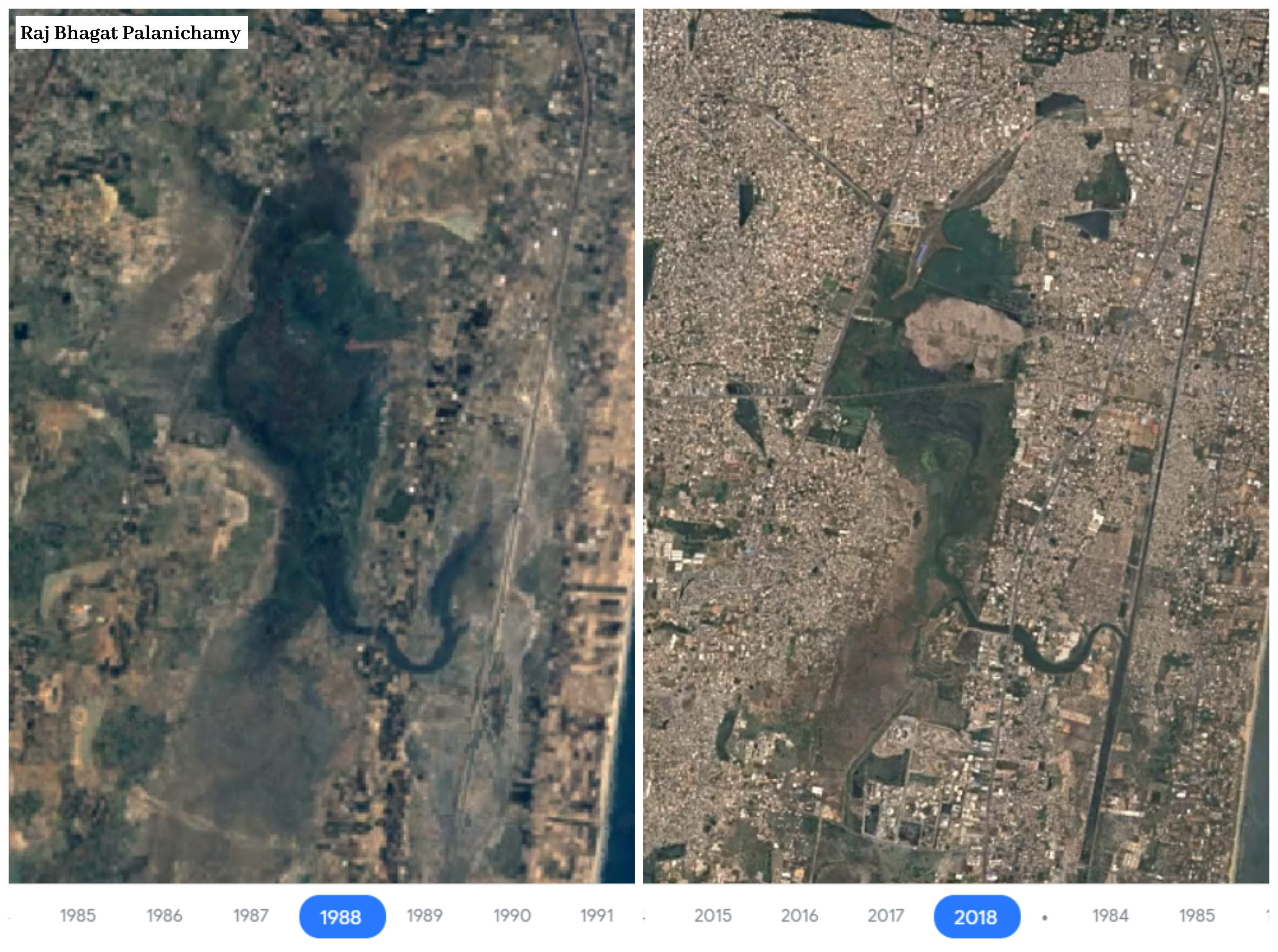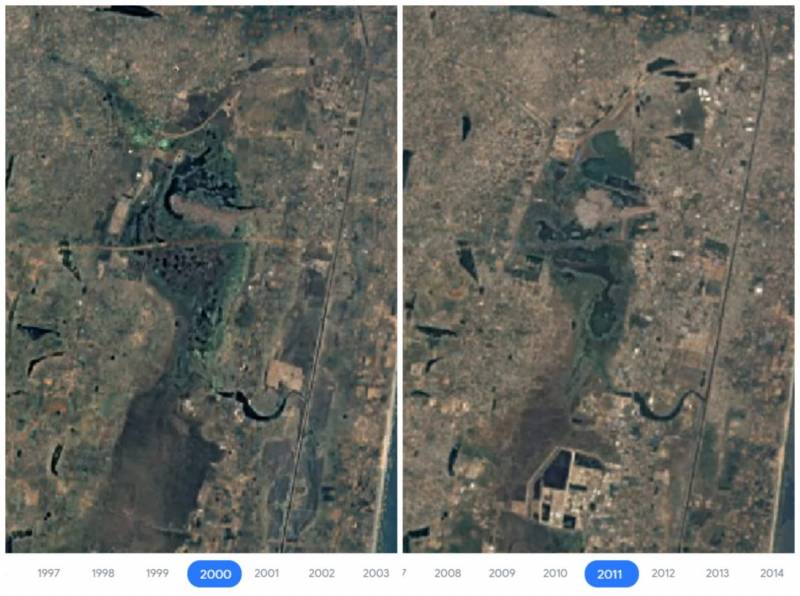Satellite images reveal Pallikaranai marshland shrinks by 93% in last 30 years
By Dheeshma
Hyderabad: An environmental disaster is unfolding in Chennai after satellite images revealed that the ecologically rich Pallikaranai wetland has shrunk by over 93 percent in last 30 years.
Images from 1989 to 2018 reveal that the ecologically rich wetland has been shrinking over the years. The marshland, which was 50 sq km in 1990, has shrunk to 3.37 sq km in 2019.
Environmentalists said rampant encroachment and dumping of solid waste are being cited the main reasons for the death of the marshland.
According to the experts, the marsh, which was supposed to act as a carbon sink is emitting a considerable amount of methane and carbon dioxide. The marshland has ironically become a threat to the environment.
According to an environmentalist, the degradation of Pallikaranai started in the 1980s. “Since 80s Greater Chennai Municipal Corporation has been dumping solid waste in the marshland. In 2002, when the first assessment of the marshland was conducted, it had already lost 90% of its original area”, he said.
�
 ������������������� Raj Bhagat Palanichamy
������������������� Raj Bhagat Palanichamy
�
Natural wetlands are permanently or seasonally saturated in water and create habitats for aquatic plants. They retain large volumes of water, and their slow release makes them important for combating extreme weather conditions like floods and droughts. Wetlands also contribute to water purification, water regulation, biodiversity, aesthetics and recreation, according to the United Nations. Research suggests that up to 40% of all species live or breed in wetlands.
Earlier an amicus curia appointed by Madras High Court had found that almost 100 acres of Pallikaranai land has been encroached by Central Government Institutions including National Institute of Ocean Technology (NIOT), Mass Rapid Transit System (MRTS), IT parks and residential buildings.
According to his report, two dump yards maintained by Chennai Corporation and Alandur Municipal Corporation are causing major damage to the marshland.
According to a study conducted by non-government organization Wetlands International South Asia (WISA), India has 7.7 lakh wetlands, which is the highest in South Asia. However, as per the study, India has lost one-third of its natural wetland to urbanization, pollution and agricultural expansion over the last four decades. Mumbai has lost of 71 per cent of wetland.
The union environment ministry in January 2020 has released guidelines for wetland conservation across the country. The guideline prohibits setting up industries near wetlands and disposal of construction waste into them. It also calls for fresh identification of wetlands in India. According to the new guideline, each state is mandated to set up an authority to define strategies for wetland conservation.